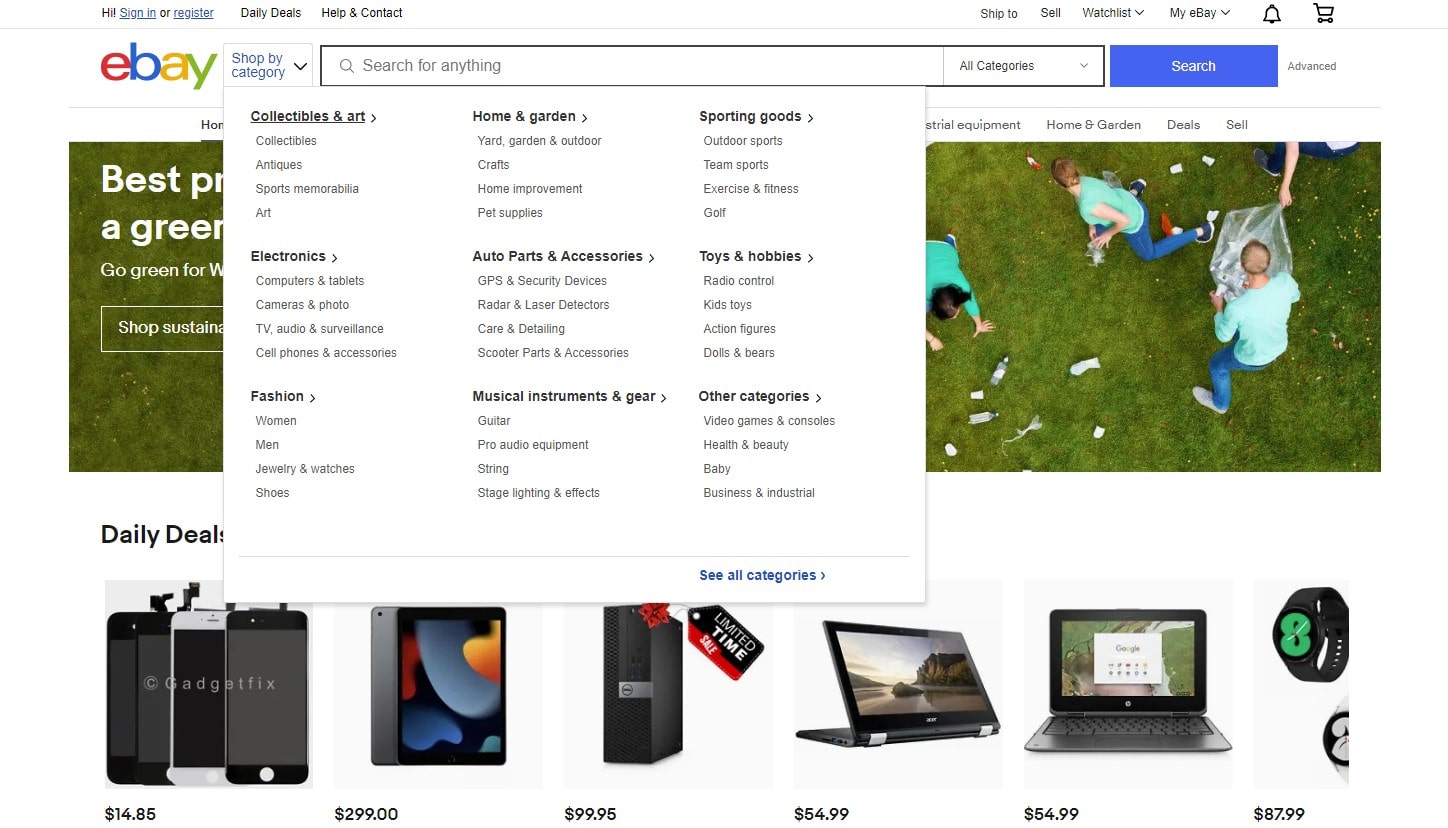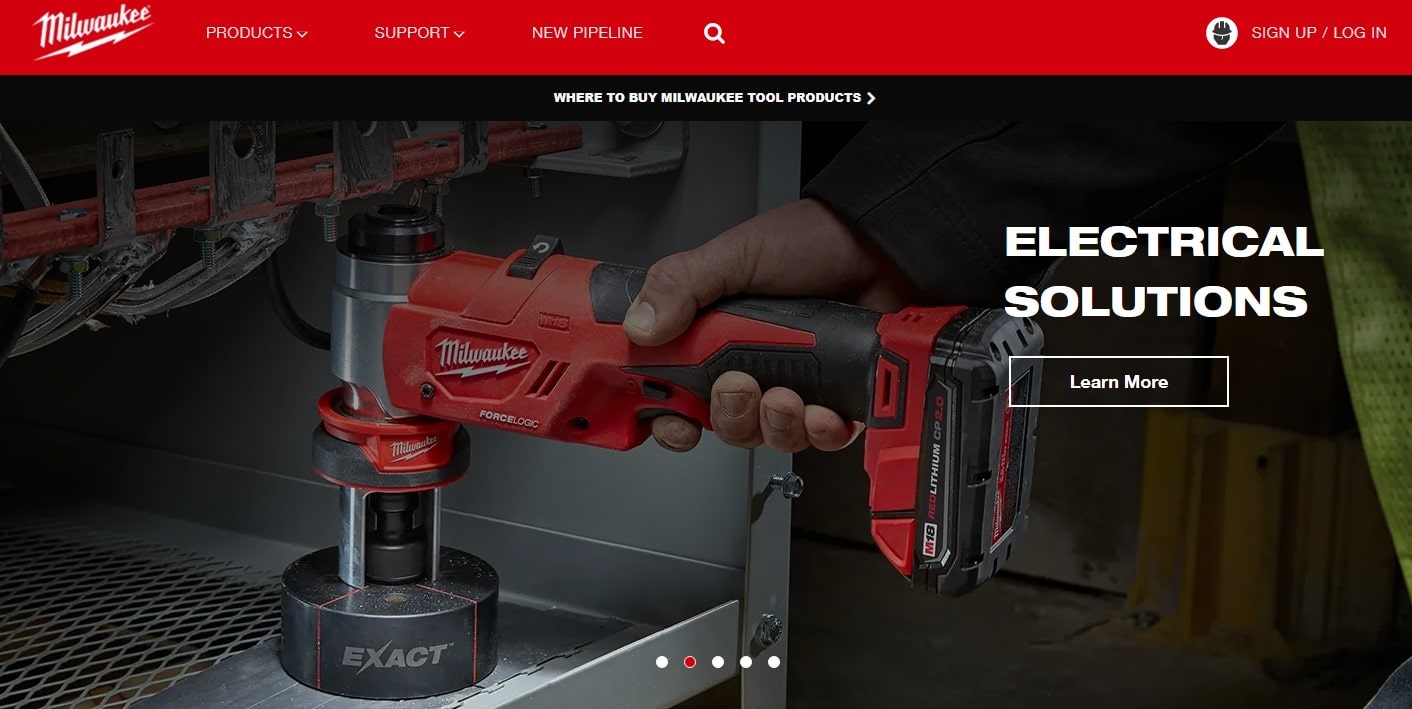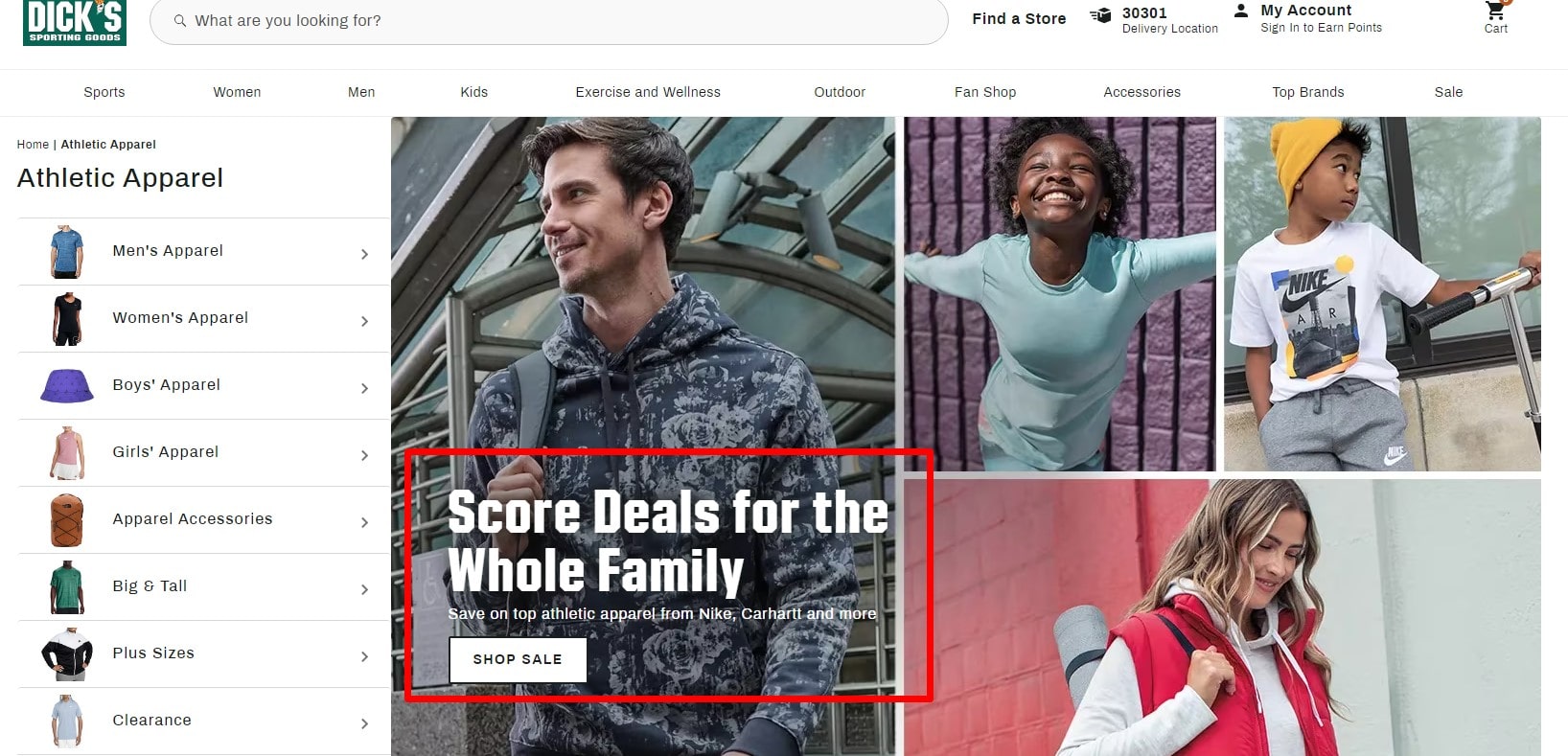B2B ecommerce, a dynamic sector revolutionizing how businesses interact and transact, stands as a cornerstone in today’s digital economy. Unlike B2C, this type of internet commerce is for businesses to trade goods and services. At its core, B2B ecommerce thrives on the integration of technology to streamline operations, enhance customer experiences, and boost sales efficiency.
Understanding the intricacies of B2B ecommerce reveals its transformative impact. Here are key aspects:
- Streamlined Supply Chains: By digitizing processes, businesses enjoy faster, error-free transactions.
- Customized Purchasing Experiences: Tailored solutions cater to unique business needs, setting B2B ecommerce apart.
- Data-Driven Insights: Leveraging data analytics, businesses optimize strategies and understand customer behavior better.

In recent years, B2B ecommerce has seen exponential growth. Statistics show a staggering 70% of businesses preferring online purchasing over traditional methods, underscoring the shift towards digital platforms. This trend signifies the critical role B2B ecommerce plays in contemporary commerce, offering scalability and versatility in business transactions.
As businesses strive to increase conversion rates and improve usability, tools like Plerdy become invaluable. Plerdy’s suite, adept in analyzing user behavior, offers insights for effective CRO & UX strategies. Whether it’s scrutinizing SEO data or conducting A/B testing, Plerdy stands as a pivotal asset in enhancing the B2B ecommerce experience. By leveraging such tools, businesses can not only adapt to the evolving ecommerce landscape but also forge ahead, creating robust, customer-centric online environments.
Defining B2B Ecommerce
B2B ecommerce stands as the powerful intersection where business transactions and modern digital platforms converge. Specifically, B2B (Business-to-Business) ecommerce revolves around transactions between businesses, rather than with individual consumers. Dive into the bustling landscape of ecommerce and you’ll find B2B as a dominant player, fueling many industries with its unique approach.
For instance, consider these niches:
- Wholesale Suppliers: Instead of targeting end consumers, they empower other businesses with bulk products.
- Manufacturing: They use B2B ecommerce platforms to connect with parts suppliers, streamlining production.
- Software as a Service (SaaS): They offer solutions directly to businesses, enhancing operational efficiencies.
At the heart of B2B ecommerce lies a drive to foster long-term business relationships, marked by custom pricing, bulk orders, and tailored solutions. While typical ecommerce primarily focuses on quick transactions, B2B emphasizes partnerships that thrive on mutual growth and success. It’s this symbiotic nature that sets B2B ecommerce apart, acting as a lynchpin in the intricate machinery of modern business. And as businesses evolve, B2B ecommerce continues to carve out its indispensable niche, adapting to the nuanced needs of industries, ensuring that business interactions remain efficient, digital, and ahead of the curve.
Key Differences Between B2B and B2C Ecommerce

In the expansive landscape of ecommerce, both B2B and B2C models stand out, yet their operational blueprints contrast sharply. Delving into the nuances, B2B ecommerce revolves around businesses catering to other businesses. Here, bulk orders, custom solutions, and negotiation play a pivotal role. On the other hand, B2C ecommerce zeroes in on businesses directly targeting individual consumers, where immediacy, appeal, and personal touch often steal the limelight.
Specific niches showcase these disparities vividly:
- Fashion Retailers: In the B2C ecommerce space, they reach out to individuals with the latest trends, making it a click-and-buy experience.
- Industrial Equipment Suppliers: Under the B2B umbrella, they supply machinery or tools to other businesses, emphasizing long-term agreements and possible customization.
- Beauty Brands: In B2C ecommerce, they entice individual consumers with vibrant packaging and influencer collaborations, whereas in B2B, they might offer bulk products for salons or spas.
Driving deeper, the business relationships in B2B ecommerce often stretch out over extended periods, banking on trust and mutual growth. B2C ecommerce, however, thrives on capturing consumer attention swiftly, leading to quicker checkouts.
Marketing strategies also diverge. B2B campaigns zero in on ROI, efficiency, and problem-solving capabilities, while B2C strategies weave stories, evoke emotions, and bank on consumer aspirations.
In essence, while both B2B and B2C ecommerce operate in digital marketplaces, their tactics, audiences, and end-goals set them miles apart, each shaping the future of business in its unique stride.
Features of B2B Ecommerce Platforms

Dive into the B2B ecommerce space and you’ll quickly realize that the platform capabilities required for this business landscape differ significantly from those tailored for individual consumers. B2B ecommerce platforms empower businesses to craft partnerships, negotiate deals, and collaborate seamlessly in the digital arena.
Highlighting the robust features of B2B ecommerce platforms:
- Customizable Catalogs: Tailored to niche industries, such as machinery suppliers or chemical distributors, platforms allow businesses to showcase specialized products with detailed specifications.
- Tiered Pricing Mechanisms: Recognizing the volume-based nature of B2B transactions, these platforms support bulk discounts and tiered pricing strategies.
- Integrated Workflow Approvals: Given the often-complex decision-making processes in businesses, features that facilitate order approvals by multiple stakeholders stand out.
- ERP and CRM Integrations: B2B ecommerce doesn’t operate in isolation. Integrations with Enterprise Resource Planning and Customer Relationship Management tools ensure businesses stay on top of inventory, sales, and relationships.
- Advanced Search Capabilities: In a sector where specifics matter, detailed search and filtering options, especially for niches like electronic component distributors, are paramount.
Pioneering the way for B2B interactions, these ecommerce platforms redefine how businesses collaborate. By providing solutions tailored to different industries, they help businesses manage wholesale dealings and build long-term connections.
In the rapidly evolving digital business landscape, these features not only streamline operations but also fortify the very backbone of B2B interactions, propelling businesses into an era marked by efficiency, adaptability, and growth.
Multi-Tiered Pricing and Bulk Discounts
Within the dynamic realm of business-to-business (B2B) electronic commerce, a strategy has emerged as a fundamental element for achieving prosperous commercial engagements: the implementation of multi-tiered pricing structures and the provision of bulk discounts. Within the digital confines of ecommerce platforms, businesses strive to optimize their sales processes, and offering flexibility in pricing stands as a beacon in this endeavor.
Examples that highlight the efficacy of this approach:
- Tech Components Wholesaler: As quantities scale up, the price per unit takes a dip, incentivizing electronics manufacturers to buy more, thus bolstering both sales and partnerships.
- Apparel Distributors: Seasonal collections, when ordered in bulk, might come with layered discounts, luring in retail chains to stock up and plan ahead.
- Raw Material Suppliers: Industries such as construction benefit immensely when suppliers offer scaled pricing based on purchase volume, cementing long-term deals.
These pricing strategies not only fuel sales but also fortify business relationships. The appeal lies in the perceived value – businesses feel they’re getting a better deal with increased quantities, making them more inclined to place larger orders. This, in turn, drives inventory turnover for the seller and nurtures the buyer-seller bond.
By leveraging multi-tiered pricing and bulk discounts, B2B ecommerce platforms become powerful tools that adapt to the diverse needs of various industries. They navigate the balance between incentivizing purchases and ensuring profitability, marking a pivotal shift in how modern businesses operate in the ecommerce space.
Purchase Order and Invoicing Functionalities
In the intricate tapestry of B2B ecommerce, two threads play pivotal roles in ensuring seamless transactions: purchase order (PO) and invoicing functionalities. These features act as the backbone for a plethora of businesses, emphasizing efficiency, transparency, and accuracy within the ecommerce framework.
Dive into various niches and observe:
- Equipment Suppliers: They rely on clear-cut POs to confirm order specifics before shipping out machinery. Invoicing then validates the transaction, providing a trail for future audits or warranty claims.
- Software Vendors: Offering enterprise solutions, these businesses utilize invoicing features to detail licensing terms, usage rights, and support provisions, ensuring clarity in every deal.
- Specialty Food Distributors: Purchase orders here may include specifics on batch numbers, expiration dates, and storage conditions. Post-delivery, the generated invoice becomes a testament to the agreed terms, ensuring accountability.
The allure of these functionalities in B2B ecommerce lies in their capacity to standardize operations. Purchase orders establish a mutual understanding of what’s being procured, while invoices seal the deal, documenting every facet of the transaction. By integrating these elements into the digital landscape, ecommerce platforms ensure that businesses stay on point, eliminating potential pitfalls that could arise from miscommunication or overlooked details.
In the grand scheme of B2B interactions, purchase order and invoicing functionalities stand out as catalysts, streamlining operations, and instilling trust. By rooting business exchanges in clarity and precision, they amplify the robustness of ecommerce, paving the way for enduring, fruitful partnerships.
Customizable Catalogs and Product Displays
Amid the dynamic world of B2B ecommerce, the power to tailor catalogs and product displays emerges as a critical factor driving business engagement. These features, ever-evolving, enable businesses to showcase their offerings in ways that resonate most with their clientele.
Consider these niches for insight:
- Industrial Machinery Vendors: Customizable catalogs allow these businesses to group machinery based on functionality, power consumption, or size. By doing so, they cater to clients who have distinct needs, ensuring they find what they’re after swiftly.
- Organic Fabric Wholesalers: Highlighting sustainability certifications, fabric blends, or dyeing methods becomes a breeze with adaptive product displays. It’s all about aligning with the ethos of eco-conscious brands.
- Boutique Tea Distributors: Offering myriad blends, these distributors can use customizable displays to segregate teas by region, flavor profile, or caffeine content, making selections more intuitive.
Benefits unlocked by these functionalities:
- Spot-on Targeting: Businesses can group and showcase products based on client preferences or emerging market trends.
- Enhanced User Experience: Clear, intuitive layouts reduce the decision-making time, driving swift conversions.
- Branding Boost: Tailored displays align with brand aesthetics, amplifying brand recall and loyalty.
By weaving in customizable catalogs and product displays, B2B ecommerce platforms create a digital environment where businesses can flexibly present their wares, responding to ever-shifting market demands. This adaptability not only bolsters sales but also cements relationships by showcasing products in ways that echo the preferences and values of the clientele.
Advanced Search and Filtering Options
Navigating the vast seas of B2B ecommerce inventories requires a compass that’s both intuitive and precise. That’s where advanced search and filtering tools step in, elevating the business shopping experience by whittling down choices to the most relevant picks.
Let’s dive into niche-specific applications:
- Bulk Stationery Suppliers: Imagine hunting for eco-friendly pens amidst thousands of products. Advanced filters could narrow the quest by material, ink type, or even shelf-life.
- Wholesale Tech Gadgets: Businesses seeking specific hardware specs can drill down their options, sifting out unsuitable variants in a snap.
- Agricultural Feed Distributors: Clients can now pinpoint feeds based on nutritional value, grain type, or suitability for livestock – making the selection process a breeze.
These functionalities offer:
- Precision: Sift through extensive inventories, pinpointing exact matches with ease.
- Speed: Businesses can cut down the browsing time, diving straight into what they truly need.
- Relevance: By presenting tailored results, platforms ensure businesses find items that align with their requirements.
Harnessing these advanced tools, B2B ecommerce platforms stand out by offering a streamlined, hassle-free search experience. By cutting out the noise and spotlighting the essentials, they empower businesses to make swift, informed decisions, boosting efficiency and client satisfaction in one fell swoop.
Integration Capabilities with ERP and CRM Systems
In today’s fast-paced B2B ecommerce landscape, seamless integration stands at the forefront of operational efficiency. Top-tier platforms prioritize compatibility with ERP (Enterprise Resource Planning) and CRM (Customer Relationship Management) systems, ensuring businesses maintain a smooth workflow. This integration breathes life into a unified system where data flow remains unhindered and decision-making turns sharper.
Dive into the benefits these integrations bring to specific niches:
- Industrial Equipment Vendors: Syncing inventory data from the ERP with the ecommerce platform ensures real-time stock updates, preventing overselling or stockouts.
- Wholesale Cosmetics Suppliers: CRM integration fosters a deep understanding of client preferences, paving the way for tailored product recommendations and personalized promotions.
- Tech Hardware Distributors: Seamless ERP connectivity ensures accurate pricing models, reflecting current market conditions and internal cost structures.
The value-packed advantages include:
- Unified Data Management: No more juggling between systems. Achieve a holistic view of both customer insights and backend operations.
- Operational Efficiency: Streamline processes by cutting down manual data entries and minimizing human errors.
- Enhanced Customer Experience: With real-time data at their fingertips, businesses can respond swiftly to customer needs and queries.
By bridging the gap between B2B ecommerce platforms and core business systems, organizations pave the way for streamlined operations, leading to improved client relations and business growth. The aforementioned strategy serves as a fundamental framework for contemporary enterprises to effectively navigate the intricate landscape of electronic commerce, so maintaining their sustained competitive advantage.
The Buying Process in B2B Ecommerce

Delving into the B2B ecommerce landscape reveals a buying process distinctively complex and nuanced compared to its B2C counterpart. Navigating the intricate maze of business purchasing demands an understanding of the stages involved. Each step is a dance of precision, where decisions hinge on data, relationships, and strategy.
Take a walk through some of these pivotal stages:
- Requirement Analysis: B2B ecommerce transactions often kick off with businesses identifying a gap or need. For instance, a restaurant chain might spot a demand for innovative kitchen appliances to ramp up efficiency.
- Vendor Exploration: Firms then sift through potential suppliers, weighing options based on factors like quality, reputation, and cost. Using the power of ecommerce, they can scout global options, not just local ones.
- Negotiation and Quotation: Unlike instantaneous B2C transactions, B2B deals often involve back-and-forth deliberations. Take the example of an automotive manufacturer: They won’t just pick up spare parts off a virtual shelf. Instead, they’ll engage in discussions, perhaps seeking customizations or bulk discounts.
- Purchase and Post-purchase: After sealing the deal, the process doesn’t halt. Businesses tend to monitor order fulfillment, assess product quality upon delivery, and maintain open channels for potential repeat orders or concerns.
Each stage of the B2B ecommerce buying journey is layered with decision checkpoints. The integration of digital tools amplifies efficiency, providing businesses the agility to adapt and thrive. With each passing transaction, the B2B ecommerce ecosystem evolves, driving businesses toward more streamlined, intelligent, and productive purchasing avenues.
Research and Product Discovery
B2B ecommerce is continuously changing, therefore organizations must stay current to stay competitive. This relentless pursuit often starts with rigorous research and product discovery.
For instance, consider a medical supply company in the ecommerce space. As medical technology advances, they need to:
- Spot Trends: Dive deep into market data, pinpointing emerging equipment or methods that healthcare professionals lean toward.
- Analyze Competitors: In the B2B sphere, observing competitors’ moves can offer valuable insights. Unearthing what others in the ecommerce arena are stocking or promoting gives businesses a benchmark to measure against.
- Engage with Stakeholders: Feedback from customers and partners, especially in niche sectors, often sheds light on gaps in the product line or potential areas of expansion.
- Utilize Digital Tools: Harnessing analytics tools on ecommerce platforms can provide a wealth of information. These insights help businesses tailor their inventory, catering precisely to what their B2B clientele seeks.
By delving into comprehensive research and honing their product discovery tactics, businesses ensure they stay a step ahead in the ecommerce race. This meticulous approach not only positions a company as a thought leader but also fortifies its foothold in the B2B sector, paving the way for sustained growth and success.
Request for Quotation (RFQ) and Negotiations
In the B2B ecommerce space, seamless interactions often pivot around precise RFQ processes and adept negotiations. While traditional business interactions revolved around face-to-face dialogues, the ecommerce shift has digitalized and streamlined these fundamental steps.
Imagine a construction company eyeing bulk purchases on an ecommerce platform. Their journey typically unfolds as:
- Digital RFQ Submission: Instead of manual paperwork, businesses now tap into platforms, detailing their requirements, quantities, and specifications in digital RFQ forms.
- Automated Responses: Ecommerce platforms, equipped with advanced algorithms, promptly churn out potential matches, giving businesses a quicker head-start in their purchasing journey.
- Transparent Pricing: One of the perks of B2B ecommerce is the clear-cut visibility into pricing structures. Businesses can gauge market rates and position their negotiations accordingly.
- Virtual Negotiations: Platforms often facilitate chat rooms or virtual meeting spaces, allowing businesses to discuss, haggle, and finalize deals without geographic constraints.
By leveraging the digital prowess of ecommerce, businesses in the B2B sector tap into a smoother, faster, and more transparent buying cycle. This transformation not only amplifies operational efficiency but also enhances the overall purchasing experience. In the end, both suppliers and buyers in the B2B ecosystem benefit, solidifying the indispensable role of ecommerce in today’s business environment.
Procurement and Purchase Approvals
Diving into the heart of B2B ecommerce, procurement and purchase approvals stand as pillars that uphold a business’s operational integrity. Within the digital landscape of ecommerce, these processes have been refined, ensuring efficiency and clarity at every step.
Consider a software firm eager to invest in high-end server equipment via an ecommerce portal. Their procurement journey can be mapped as:
- Digital Procurement Strategy: Ecommerce platforms empower businesses with tools that streamline the acquisition of goods or services, optimizing costs and ensuring value.
- Role-Based Approvals: Modern B2B ecommerce solutions allow businesses to set role-specific approval mechanisms. This ensures that each purchase aligns with a company’s budget and needs.
- Real-Time Notifications: No more waiting games. As soon as a purchase requires authorization, stakeholders receive immediate alerts, expediting decisions.
- Audit Trails: Ecommerce platforms maintain comprehensive logs of all transactions – a boon for businesses keen on accountability and transparency.
Through ecommerce, purchase approvals and procurement have transformed into a seamless dance of checks, balances, and swift actions. This digital evolution brings together the best of both worlds: the meticulousness of B2B procedures and the agility of ecommerce. As businesses continue to grow and adapt, these streamlined processes pave the way for success in an ever-evolving commercial landscape.
Ongoing Relationship and Account Management
In the dynamic sphere of B2B ecommerce, the journey doesn’t conclude at the transaction’s end. Instead, it evolves, ushering in a phase of sustained relationship-building and meticulous account management. Tailored experiences, consistent engagement, and streamlined operations blend to form the bedrock of thriving business partnerships.
Reflect on a distributor in the healthcare niche, leveraging ecommerce to forge connections with a multitude of clinics:
- Tailored Dashboards: Ecommerce platforms often roll out personalized dashboards, allowing businesses to quickly zero in on their purchasing trends, past interactions, and potential avenues of collaboration.
- Engage and Retain: Ecommerce tools facilitate businesses in sending out timely updates, promotions, or feedback solicitations, ensuring the connection remains warm and engaged.
- Seamless Communication: With integrated chat and email functionalities, B2B ecommerce platforms smoothen the path for clear and constant dialogues between businesses.
- Performance Analytics: Drilling down on purchase histories, businesses can extract invaluable insights, further refining their offerings and strengthening relationships.
Harnessing the potential of ecommerce, businesses can tap into a goldmine of relationship-nurturing opportunities. In this rapidly changing B2B landscape, ongoing relationships and proactive account management aren’t mere niceties—they’re imperative for sustained growth and success.
Benefits of B2B Ecommerce for Businesses

Embracing B2B ecommerce propels businesses into a realm of expanded reach, operational efficiency, and unprecedented growth potential. The digital shift, championed by ecommerce, has set the stage for businesses to cater to a global clientele while maintaining the essence of B2B relationships.
Consider a manufacturer in the electronics sector aiming to branch out to global distributors:
- Wider Reach: B2B ecommerce platforms help businesses break geographical boundaries, catering to clients from diverse regions without any physical constraints.
- Operational Efficiency: Ecommerce streamlines transactions, from browsing products to finalizing orders, cutting down on administrative tasks and ensuring rapid responses.
- Real-time Analytics: With integrated tools, businesses can gauge the pulse of the market, track purchasing trends, and forecast demands, equipping them to make informed decisions.
- Cost Savings: By cutting out middlemen, businesses can optimize their pricing strategies, ensuring competitiveness without compromising on profit margins.
- Personalized Experiences: Ecommerce platforms enable businesses to offer tailored experiences to their clientele, from custom product recommendations to individualized support.
In this digital era, the influence of ecommerce in reshaping the B2B landscape remains undeniable. As businesses sync up with these digital channels, the horizon of opportunities stretches out, promising not just growth but transformation. Embracing B2B ecommerce isn’t about keeping pace with trends; it’s about seizing opportunities, driving efficiencies, and fostering robust business relationships in an interconnected world.
Challenges and Considerations in B2B Ecommerce
The transformative rise of B2B ecommerce paints a promising picture for businesses, but the road isn’t devoid of hurdles. Companies diving into the ecommerce space often grapple with nuances that demand both strategic planning and dynamic adaptability.
Picture an industrial machinery supplier branching out into ecommerce. The intricacies they face can range from:
- Complex Sales Cycles: B2B transactions, unlike their B2C counterparts, involve intricate buying processes, often requiring multiple stages of approvals, negotiations, and customizations.
- Price Volatility: Due to bulk orders and fluctuating market conditions, businesses often wrestle with dynamic pricing models, trying to strike the perfect balance between competitiveness and profitability.
- Integration Issues: Synchronizing ecommerce platforms with existing ERP or CRM systems can throw up compatibility challenges, making seamless data transfer a demanding task.
- Customization Demands: B2B clients expect tailored solutions. Meeting these customization requirements while maintaining operational efficiency often becomes a tightrope walk.
- Regulatory Compliance: Especially in sectors like pharmaceuticals or chemicals, businesses need to be wary of regulations, ensuring every transaction adheres to stipulated guidelines.
B2B ecommerce, while brimming with potential, requires businesses to be agile, adapting to these challenges with informed strategies. By understanding the landscape, anticipating roadblocks, and leveraging digital tools efficiently, companies can navigate these challenges and capitalize on the vast opportunities ecommerce offers in the B2B sector.
Best Practices for B2B Ecommerce Success

In the intricate landscape of B2B ecommerce, businesses must meticulously carve out strategies to foster growth and fortify their foothold. Thriving in this dynamic ecosystem isn’t about chance, but about adhering to certain best practices that have consistently driven results. Whether you’re a burgeoning startup in the software-as-a-service sector or an established industrial equipment provider, these practices can set the foundation for sustained ecommerce success:
- User-Friendly Interface: Ensure your platform remains intuitive. High-grade navigation and seamless user experiences can substantially reduce purchase friction.
- Tailored Product Descriptions: Detailed, industry-specific content that resonates with your target business audience aids in informed decision-making.
- Robust Customer Support: Equip your clients with round-the-clock support. Whether through chatbots or dedicated representatives, offer real-time solutions to client queries.
- Transparent Pricing Models: While B2B pricing can be intricate due to bulk orders and bespoke solutions, strive for transparency. Offer breakdowns and possible customizations.
- Integrated Systems: Streamline operations by integrating CRM, ERP, and other systems with your ecommerce platform. This facilitates smooth data transfer, ensuring every cog in the business machine moves in harmony.
Adopting these practices can empower businesses to not only navigate but also lead in the competitive B2B ecommerce arena. In a domain where client trust and operational efficiency reign supreme, these guidelines act as markers, directing enterprises toward informed decisions and holistic growth.
Prioritizing User-Friendly Design and Navigation
In the bustling sphere of B2B ecommerce, the way businesses present their platforms can be the dividing line between a potential client and a missed opportunity. The saying “first impressions last” holds weight here. Your online storefront’s design and navigation play an instrumental role in defining these initial encounters. Consider an enterprise-level software distributor or a niche machinery dealer in the business landscape – the expectations from their ecommerce platforms are clear: simplicity combined with efficiency.
Elements to emphasize:
- Streamlined Layout: Remove excess clutter. Highlight essential features that businesses often seek out, ensuring they’re just a click away.
- Intuitive Search Functions: Cater to the precise needs of B2B clients. An advanced search bar that pinpoints products or services can drastically improve user experience.
- Mobile-Optimization: With the surge in on-the-go browsing, ensure your platform responds well to various devices – from tablets to smartphones.
- Consistent Branding: Whether it’s typography or color schemes, uniformity exudes professionalism in the B2B ecommerce space.
Businesses diving into ecommerce must grapple with the challenge of marrying functionality with aesthetics. A well-navigated site not only retains attention but can also lead to increased transactions and enhanced trust. As the digital age unfolds, businesses must gear up, making user-centric design and navigation their cardinal focus to triumph in the competitive world of B2B ecommerce.
Investing in Mobile Optimization and Responsive Design
Businesses must adjust quickly to changing user behavior in B2B ecommerce. With an increasing number of professionals relying on mobile devices to make purchase decisions, neglecting mobile optimization becomes an oversight no business can afford. Let’s draw from an illustrative example: imagine a high-end industrial equipment supplier. If their platform glitches or lags on a CEO’s mobile while they’re trying to place an order during a quick lunch break, that’s a significant revenue opportunity slipping through the cracks.
Key focus areas include:
- Fluid Layouts: Ensure that web content flows seamlessly across various screen sizes – making sure the user experience remains consistent.
- Fast Loading Speeds: Time is money in the business world. Slow-loading sites can deter busy professionals, leading to potential lost sales.
- Touch-friendly Navigation: Ensure that buttons are adequately spaced and sized for those navigating on a touchscreen.
- Readable Text: Avoid forcing users to zoom in. Text should be legible across all devices, enhancing readability for on-the-move professionals.
By weaving in mobile optimization and responsive design into the fabric of a B2B ecommerce strategy, businesses set the stage for capturing a wider audience and driving higher engagement. In today’s digital age, making this investment isn’t just an added luxury – it’s an imperative step for businesses eager to thrive and leave a lasting mark in the competitive ecommerce sphere.
Utilizing Data Analytics and Feedback for Continuous Improvement
Businesses seek ways to stand out in B2B ecommerce’s competitive landscape. Tapping into data analytics and feedback stands out as a robust approach to ensure that a business stays in tune with market demands. Picture a high-tech machinery distributor aiming to optimize their online platform. By diving deep into analytics and user feedback, they discern patterns, adjust their offerings, and fine-tune the user journey, thus setting the stage for amplified sales.
Key strategies to consider:
- Segmentation Analysis: Dissect your audience, understanding preferences and behavior. This paves the way for personalized marketing strategies, capturing the essence of what the B2B audience craves.
- Conversion Rate Optimization: Use data to pinpoint where users drop off and implement changes to keep them engaged longer.
- Feedback Loops: Establish channels where clients can provide insights. When a business acts on these recommendations, it not only enhances the platform but also fosters client loyalty.
- Predictive Analytics: Harness historical data to anticipate future trends. For instance, if a business in the medical equipment domain spots a rising interest in a specific device type, they can ramp up their inventory ahead of demand.
By weaving data analytics and feedback into the B2B ecommerce blueprint, businesses bolster their chances of success. This proactive approach ensures companies remain responsive to market shifts, thereby optimizing both client satisfaction and bottom-line results.
Fostering Strong Customer Relationships with CRM Tools
In the intricate dance of B2B ecommerce, businesses often grapple with maintaining a close bond with their clients. Enter CRM tools – these powerhouses don’t just store client information but serve as a roadmap for businesses to craft bespoke experiences. For instance, a high-end fabric distributor could use a CRM to track a fashion house’s purchase patterns, preferences, and feedback. Leveraging this data, they can then tailor their offerings, ensuring they always hit the mark.
Here’s how to elevate the B2B journey with CRM:
- Personalized Marketing: Craft campaigns that resonate. If a business understands a client’s penchant for sustainable materials, they can highlight their eco-friendly products, thus deepening the connection.
- Sales Forecasting: By analyzing past interactions and purchases, businesses can anticipate future needs and stay a step ahead, ensuring they’re always stocked up and ready.
- Efficient Communication: CRM tools streamline interactions, ensuring that businesses never drop the ball. This consistency in communication strengthens trust and builds enduring partnerships.
- Feedback Management: Cataloging client feedback and acting upon it showcases a business’s commitment to excellence. It’s not just about selling but about cultivating an experience that’s hard to replicate.
Harnessing CRM tools in the B2B ecommerce sector isn’t a mere luxury but a pivotal strategy. When businesses prioritize relationships, they not only boost sales but foster brand loyalty, ensuring they remain the top choice for their clientele.
Conclusion
In the evolving landscape of digital commerce, B2B ecommerce emerges as a formidable player. It’s not just about buying and selling – it’s about creating connections, fostering growth, and driving innovation. As we wrap up our exploration of B2B ecommerce, it’s clear that this field is more than a transactional space; it’s a hub of opportunity and strategic advancement.
Reflecting on B2B ecommerce, key takeaways include:
Digital Transformation: Ecommerce has revolutionized how businesses interact, making transactions quicker and more efficient.
Customer-Centric Approaches: B2B ecommerce focuses on tailored experiences, addressing specific business needs.
Data-Driven Decisions: Leveraging analytics, B2B platforms offer insights for smarter business strategies.
With a staggering 75% of B2B sales expected to be made online in the near future, ecommerce stands at the forefront of business innovation. It’s a testament to how digital platforms are reshaping the B2B landscape, making processes more agile and customer-focused.
To truly harness the power of B2B ecommerce, tools like Plerdy are essential. Offering in-depth SEO and UX analysis, Plerdy helps businesses fine-tune their strategies for optimal performance. Whether you’re looking to enhance user experience, boost conversion rates, or gain valuable insights, Plerdy is your go-to solution. Embrace the new era of B2B ecommerce – it’s time to take your business to the next level 🚀. Dive in, explore, and let the digital currents propel your enterprise forward
